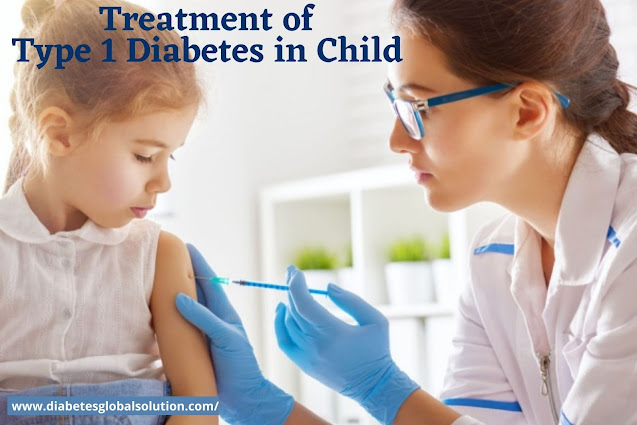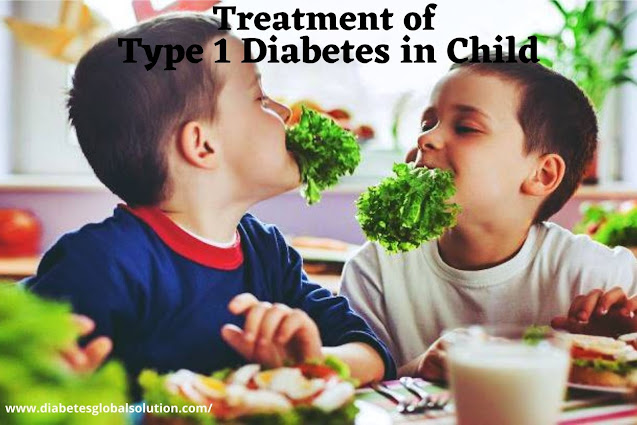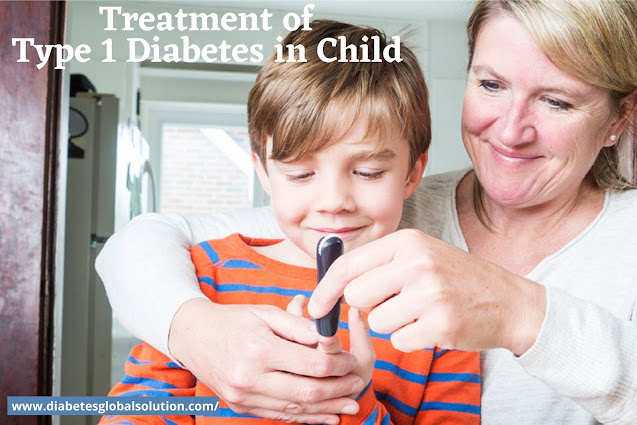What is diabetes?
Diabetes is a possibly
perilous condition which prompts elevated levels of glucose (sugar) in the
blood. Glucose is constrained by the hormone insulin, which is created by the
pancreas. Diabetes creates when the pancreas doesn't work appropriately, or
when the body doesn't utilize insulin appropriately.
There are various sorts of
diabetes. The most widely recognized in kids is Type 1 Diabetes, additionally
called adolescent diabetes. This is an immune system infection where the body's
resistant framework annihilates cells in the pancreas that produce insulin.
Type 1 Diabetes is a long lasting condition that must be dealt with ordinary
infusions of insulin.
Type 2 diabetes is more
normal in individuals more than 40. It creates when the body quits utilizing
insulin appropriately. Type 2 Diabetes is getting more normal in more youthful
grown-ups, yet it is exceptionally uncommon in little youngsters.
Rarely, infants are brought
into the world with diabetes. This is called neonatal diabetes and is brought
about by an issue with the qualities. Neonatal diabetes can vanish when the kid
is a year old, however the diabetes for the most part returns sometime down the
road.
Type 1 Diabetes in grown-ups
and about keeping difficulties from Type 1 Diabetes; see the subject Type 1
Diabetes.
|
What
is Type 1 diabetes?
Type 1 diabetes creates when
the pancreas quits creation insulin. Your body needs insulin to let sugar
(glucose) move from the blood into the body's cells, where it tends to be
utilized for energy or put away for sometime in the future.
Without insulin, the sugar can't get into the cells to accomplish its work. It remains in the blood. This can cause high glucose levels. An individual has diabetes when the glucose is excessively high.
Diabetes
side effects in youngsters under 5
It tends to be difficult to
detect the manifestations of diabetes in little youngsters. Side effects
ordinarily grow rapidly, over half a month, and include:
Being very thirsty
Being very hungry
Urinating more - your child
might start wetting themselves again if they are toilet trained
Feeling tired and weak all
the time
Losing weight without any
explanation
Having blurred vision or
other problems with eyesight
Having a yeast infection
(thrush)
Having fruity-smelling
breath
Being irritable, restless or
moody in the event that your kid has a few of these indications, see a
specialist. It's essential to treat diabetes since it can prompt difficult
issues after some time, for example, coronary illness or harm to the kidneys, nerves;
eyes and skin.
What
will it be like for your child to live with Type 1 diabetes?
Your child can live a long,
healthy life by learning to manage his or her diabetes. It will become a big
part of your and your child's life.
You play a major role in
helping your child take charge of his or her diabetes care. Let your child do
as much of the care as possible. At the same time, give your child the support
and guidance he or she needs.
How
can you manage diabetes?
The way to overseeing
diabetes is to keep glucose levels in an objective reach. To do this, your
youngster needs to take insulin, eat about a similar measure of sugar at every
dinner, and exercise. Part of your kid's day by day schedule likewise
incorporates checking their glucose levels at specific occasions, as exhorted by
your primary care physician.
The more extended an
individual has diabetes, the almost certain the person is to have issues, for
example, illnesses of the eyes, heart, veins, nerves, and kidneys.
For reasons unknown, kids
appear to be shielded from these issues during youth. Be that as it may, if
your kid can control their glucose levels each day, it might help forestall
issues later on.
What
symptoms should you watch for?
In any event, when you are
cautious and do quite a few things, your youngster can have issues with low or
high glucose. Show your kid to search for indications of low and high glucose
and to realize what to do if this occurs.
On the off chance that your
kid has low glucose, the individual in question may perspire a great deal and
feel feeble, precarious, or hungry. However, your youngster's side effects
might be extraordinary.
Low glucose happens rapidly.
An individual can get low glucose inside minutes after exercise or subsequent
to taking insulin without eating enough.
In the event that your kid
has high glucose, the individual might be exceptionally parched or hungry, need
to pee more frequently than expected, or have foggy vision. High glucose
normally grows gradually over hours or days.
Small kids can't tell in the
event that they have low glucose as well as could reasonably be expected.
Additionally, after your kid has had diabetes for quite a while, the individual
in question may not see low glucose side effects any longer.
This raises the opportunity
that your kid could have low glucose crises. In the event that you are stressed
over your youngster's glucose, do a home glucose test. Try not to depend on
side effects alone.
Both low and high glucose
can make issues and need be dealt with. Your PCP will propose how frequently
your kid's glucose ought to be checked.
How
often does your child need to see the doctor?
See your youngster's primary
care physician no less than each 3 to a half year to check how well the
treatment is functioning. During these visits, the specialist will do a few
tests to check whether your kid's glucose is leveled out. In view of these
outcomes, the specialist may change your kid's treatment plan.
At the point when your kid
is 12 years of age, the person in question will begin having assessments and
tests to search for any issues from diabetes.
How
will your child's treatment change over time?
Your kid's insulin portion
and perhaps the kinds of insulin may change after some time. The manner in
which your kid takes insulin (with shots or an insulin siphon) additionally may
change. This is particularly obvious during the adolescent years when your kid
develops and changes a ton.
What and how much food your
kid needs will likewise change throughout the long term. Be that as it may, it
will consistently be critical to eat about a similar measure of sugar at every
dinner. Starch is the supplement that most influences glucose.
Managing
diabetes in young children
Your kid will require
insulin a few times each day. This is given by infusion or with an insulin pen.
Another choice is an insulin siphon, a little gadget which is worn 24 hours per
day and conveys insulin to the body through a plastic cylinder.
A siphon isn't appropriate
for each youngster, so talk about this with your primary care physician. You
might be qualified for an appropriation from the Australian Government to
purchase a siphon. Visit the JDRF site for more data.
You should screen your kid's
blood glucose levels consistently, up to multiple times for the duration of the
day and night. You do this by testing a drop of your youngster's blood in a
unique testing unit. The point is to keep the levels inside an objective reach
set by your primary care physician.
To keep blood glucose levels
inside the correct reach, you should cautiously adjust the food your kid eats
with the measure of physical action they do and their insulin.
On the off chance that their
blood glucose levels fall excessively low, your youngster could create
hypoglycaemia, or in the event that they are too high they could create
hyperglycaemia, which could prompt a significantly more genuine condition known
as ketoacidosis.
Both of these conditions are
health related crises and you should figure out how to perceive and oversee
them.
You will likewise need to
keep your kid solid by following an eating plan and ensuring they get a lot of
physical action.
How to manage your own needs
Discovering your kid has
diabetes can be overpowering. Your kid's needs will differ from everyday,
contingent upon what they eat, regardless of whether they're wiped out, whether
they're developing and how much rest they've had. You will oversee preferable
on certain days over others and should attempt to take each day in turn.
Recollect that having
diabetes can influence your kid's conduct. They may feel unique in relation to
other kids. Include your youngster in their own consideration and show them how
to use sound judgment for their wellbeing. It's additionally a smart thought to
acquaint them with other kids who have diabetes.
You are in good company. You
will have a group of experts to support you, which may incorporate your GP,
endocrinologist, diabetes teacher dietitian, podiatrist and eye master.
A credentialed diabetes
instructor is an exceptionally prepared wellbeing proficient who will tell you
the best way to deal with your kid's diabetes. To discover a credentialed
diabetes teacher close to you, visit the Australian Diabetes Educators
Association site.
Ensure every individual who
thinks about your youngster realizes they have diabetes and how to oversee it.
Furthermore, ensure that glucose (a sort of sugar found in numerous
nourishments, including nectar and natural product juices) is consistently
accessible in the event of hypoglycaemia.
|
Tag
|





Post a Comment